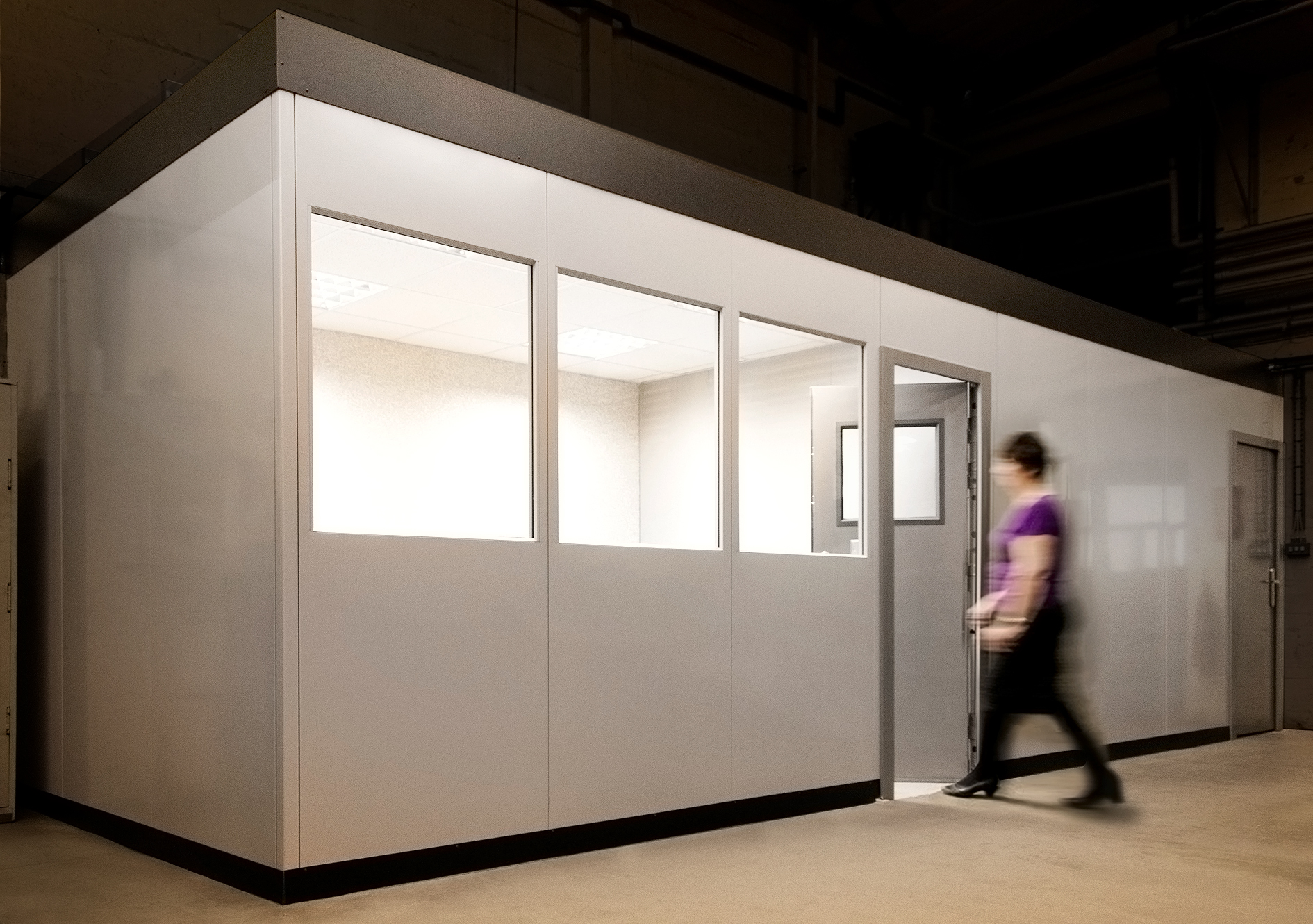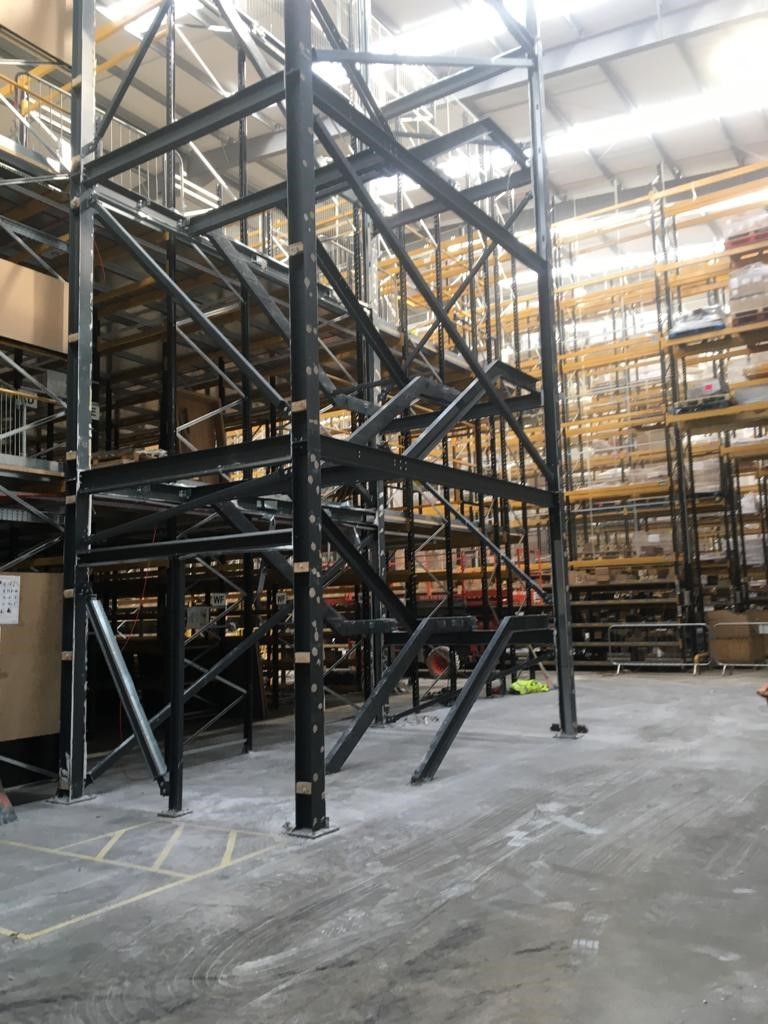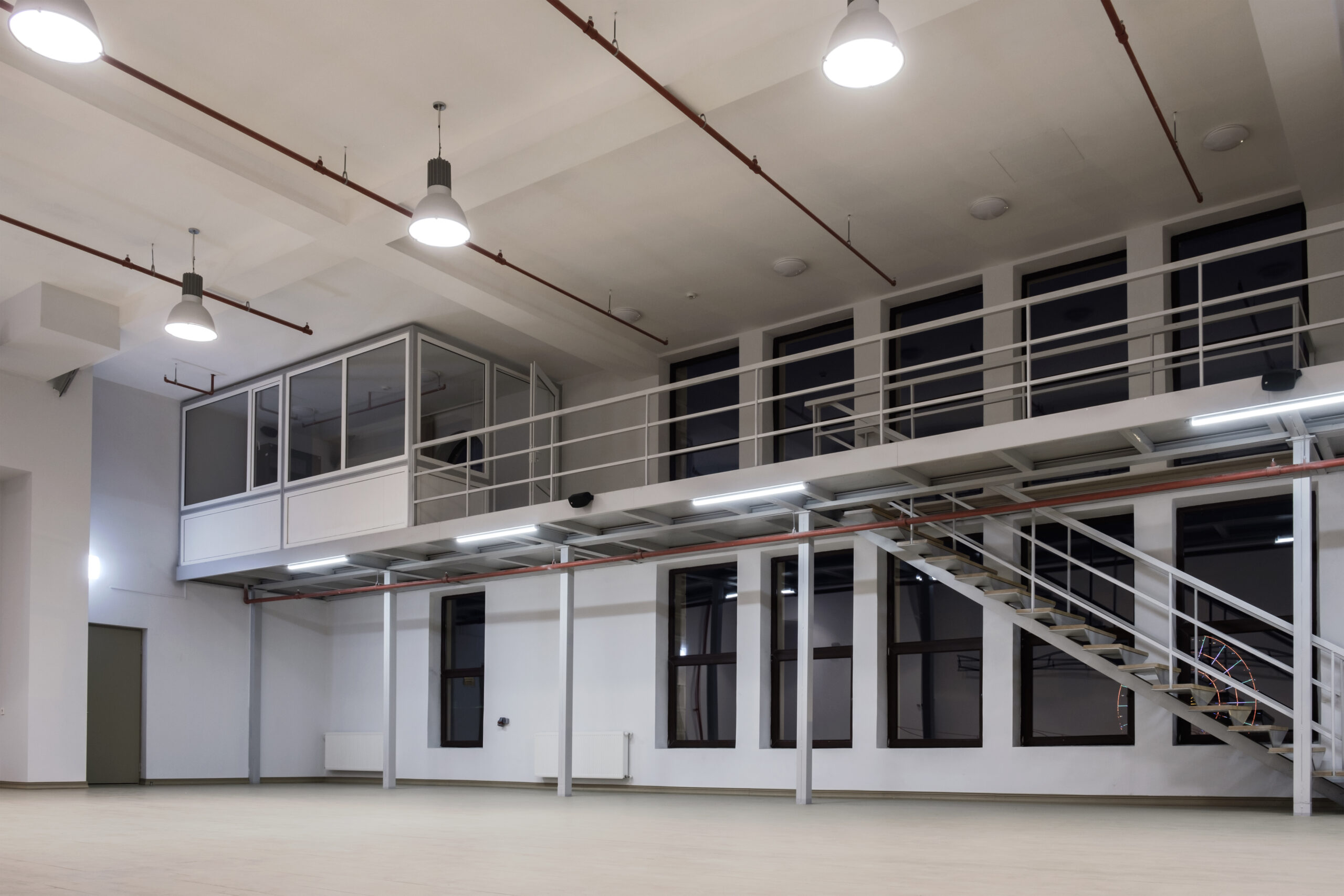In the fast-paced world of logistics and supply chain management, the efficient organisation of warehousing space is not just a necessity but a strategic advantage. Warehouse partitioning, a method of dividing larger warehouse spaces into smaller, more manageable areas, has emerged as a pivotal strategy for businesses looking to optimise operations. This blog post explores the many benefits that partitioning brings to warehousing, highlighting its impact on efficiency, safety, and overall operational effectiveness.
Enhanced Space Utilisation
One of the primary advantages of warehouse partitioning is the enhanced utilisation of available space. In many cases, warehouses are vast, open areas where space is not always used to its full potential. By implementing partitioning systems, businesses can create defined areas for specific purposes, such as separate storage sections for different product lines, processing areas, or even office spaces within the warehouse itself. This strategic segmentation allows for a more organised and efficient use of space, ensuring that every square foot of the warehouse contributes to the business’s operational goals. The flexibility of modern partitioning systems also allows for easy reconfiguration, adapting to changing business needs without significant downtime or renovation costs. Whether it’s accommodating seasonal fluctuations in inventory, expanding product ranges, or restructuring operations, partitioning provides a cost-effective solution to evolving space requirements.
Improved Inventory Management
Effective inventory management is the backbone of successful warehousing. Partitioning facilitates better inventory control by segregating products based on type, demand, or any other relevant criteria. This segregation helps in reducing the time spent on locating items, thereby speeding up order fulfilment processes. Additionally, by creating dedicated zones for high-demand or high-value items, businesses can implement more stringent security measures and monitoring, reducing the risk of loss or damage. Partitioning also supports the implementation of advanced inventory management methodologies, such as first-in-first-out (FIFO) or last-in-first-out (LIFO), by physically separating older stock from new arrivals. This physical demarcation ensures that inventory is rotated effectively, minimising the risk of obsolescence and ensuring that products remain fresh, especially in the case of perishable goods.

Enhanced Safety and Security
Safety and security are paramount in warehousing operations, both for the protection of goods and the well-being of staff. Partitioning contributes to a safer working environment by creating designated areas for specific activities, thereby reducing the likelihood of accidents. For example, areas with high forklift traffic can be separated from pedestrian zones, minimising the risk of collisions. Similarly, hazardous materials can be stored in specially constructed secure areas, isolated from general warehouse activities to prevent accidental exposure or contamination. From a security perspective, partitioning enables businesses to restrict access to certain areas of the warehouse, protecting sensitive or high-value inventory. Access controls can be easily integrated into partitioned areas, ensuring that only authorised personnel can enter these zones, thereby reducing the risk of theft or tampering.
Noise Reduction and Environmental Control
Warehouse operations can be noisy, especially in facilities that handle manufacturing or assembly processes alongside storage. Partitioning can significantly reduce noise levels, creating a more comfortable and productive environment for employees. Specialised partitioning systems with sound-dampening materials can be used to isolate particularly noisy operations, minimising their impact on the rest of the warehouse. Additionally, partitioning aids in environmental control within the warehouse. By dividing the space into smaller areas, businesses can more effectively manage temperature and humidity levels, essential for the storage of sensitive products such as electronics, pharmaceuticals, or food items. This targeted control ensures that products are stored in optimal conditions, reducing the risk of spoilage or damage and maintaining product quality.
Cost-Effectiveness and Efficiency
Investing in warehouse partitioning can yield significant cost savings and efficiency gains. By optimising the use of existing space, businesses can delay or avoid the expenses associated with warehouse expansion or relocation. The operational efficiencies gained through improved inventory management and faster order processing can also lead to reduced labour costs, as tasks are completed more swiftly and with fewer errors. Furthermore, the modular nature of many partitioning systems means that they can be installed with minimal disruption to ongoing operations. This quick and easy installation process ensures that businesses can start reaping the benefits of partitioning without significant downtime, contributing to a swift return on investment.
Streamlined Workflow and Productivity
Partitioning within a warehouse environment can significantly streamline workflow and boost productivity. By organising space into designated zones for receiving, storage, packing, and shipping, operations can proceed with minimal interference between different activities. This clear delineation helps in reducing bottlenecks and ensures a smoother flow of goods through the warehouse, from arrival to dispatch. The psychological impact of a well-ordered environment should not be underestimated, either. Employees working in clearly defined and well-organised spaces are likely to be more motivated and focused, which can lead to increased productivity and job satisfaction. In essence, partitioning can transform a chaotic warehouse into a series of efficient, task-focused zones, each optimised for specific operations, thereby enhancing overall operational output.

Customisation and Scalability
The modern warehouse is a dynamic entity, subject to the changing needs of the business, fluctuations in product demand, and evolving supply chain technologies. Partitioning systems offer unparalleled customisation and scalability, allowing warehouse managers to tailor spaces to their precise needs and adjust layouts as those needs change. Modular partitioning solutions can be easily expanded, reconfigured, or relocated, providing businesses with the agility to respond to market trends, seasonal demands, or growth opportunities without the need for costly construction projects. This flexibility is crucial for maintaining a competitive edge, enabling businesses to adapt their operations quickly and efficiently to whatever challenges or opportunities the market presents.
Energy Efficiency and Sustainability
In an era where environmental responsibility is increasingly front and centre, partitioning can also play a significant role in enhancing a warehouse’s energy efficiency and sustainability profile. By creating smaller, more manageable zones, businesses can target heating, cooling, and lighting more effectively, reducing waste and lowering energy consumption. For example, heated or air-conditioned air can be confined to occupied zones, avoiding the unnecessary climate control of unused spaces. Additionally, partitioning can facilitate the implementation of energy-efficient lighting systems, such as LED fixtures with motion sensors, further reducing energy usage and costs. Beyond the immediate environmental benefits and cost savings, these energy efficiency improvements can bolster a company’s green credentials, enhancing its reputation among environmentally conscious consumers and stakeholders.

Enhancing Aesthetics and Brand Image
While functionality and efficiency are typically the primary drivers behind the use of partitioning in warehouses, the impact on aesthetics and brand image should not be overlooked. A well-designed partitioning system can significantly improve the visual appeal of a warehouse interior, creating a professional and organised environment that reflects positively on the company. For businesses that host visits from clients, investors, or regulatory bodies, the appearance of their facilities can make a strong impression. Partitioning can be customised with company colours, logos, or other branding elements, reinforcing corporate identity and creating a cohesive look throughout the space. This attention to the aesthetic aspect of warehouse design can contribute to a stronger brand image, enhancing the company’s market position.
Contact The Professionals
The implementation of partitioning systems in warehousing extends far beyond simple space division. As outlined, the benefits encompass streamlined workflows, enhanced productivity, customisation, scalability, energy efficiency, and even improvements in aesthetics and brand image. These advantages combine to not only optimise warehouse operations but also contribute to broader strategic goals such as sustainability, market adaptability, and brand reputation. In an increasingly competitive and fast-paced market, leveraging the full potential of warehouse partitioning can provide businesses with a crucial operational advantage, ensuring they remain agile, efficient, and responsive to the ever-changing demands of the supply chain landscape. Contact the team at PD Industrial to find out more about warehouse partitioning.


